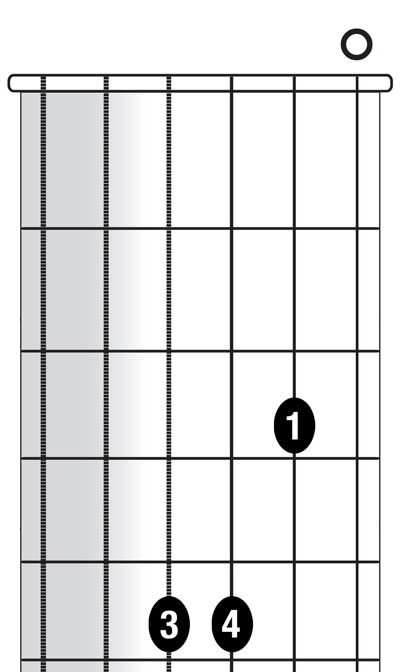Developing p,i,m,a,m,i arpeggio
by Alan HirshThe p,i,m,a,m,i arpeggio works most efficiently when organized as two sympathetic motions: i,m,a followed by m-i, with an opposed a,m in between. This opposed movement is one of the more challenging aspects of the arpeggio and should be first isolated in a p,i,m,a, m-i pattern. The m-i dyad also trains the fingers to prepare immediately after a plays. Begin by practicing this on open strings:

Next, apply this to alternating bass strings:

When secure, practice in a string crossing context:

.
The Mist
This preparatory study is played mostly in open position with a few momentary shifts to Pos III, producing a campanella effect (playing three scalar notes on three adjacent strings). In the following excerpt (mm.3-4), G is played at V on (4), C at V on (3):
At m. 47, the Bb chord with 1 on F, requires some stretching and may take some practice.

Visualize on the fingerboard:

When proficient with The Mist, begin the p,i,m,a,m,i arpeggio. This feels almost the same, except the 3rd beat dyad becomes a sympathetic m,i movement. For more on the p,i,m,a,m,i apreggio, see The Shearer Method Book I, Classic Guitar Foundations, p.160. Other studies that apply this arpeggio may also be found in Sheet Music section of the Shearer Studio.

0 Comments